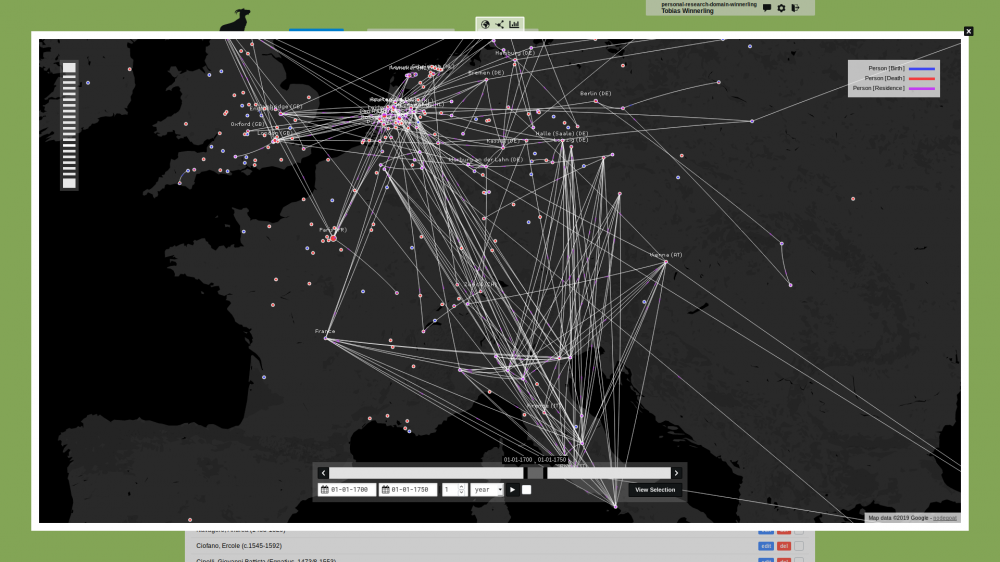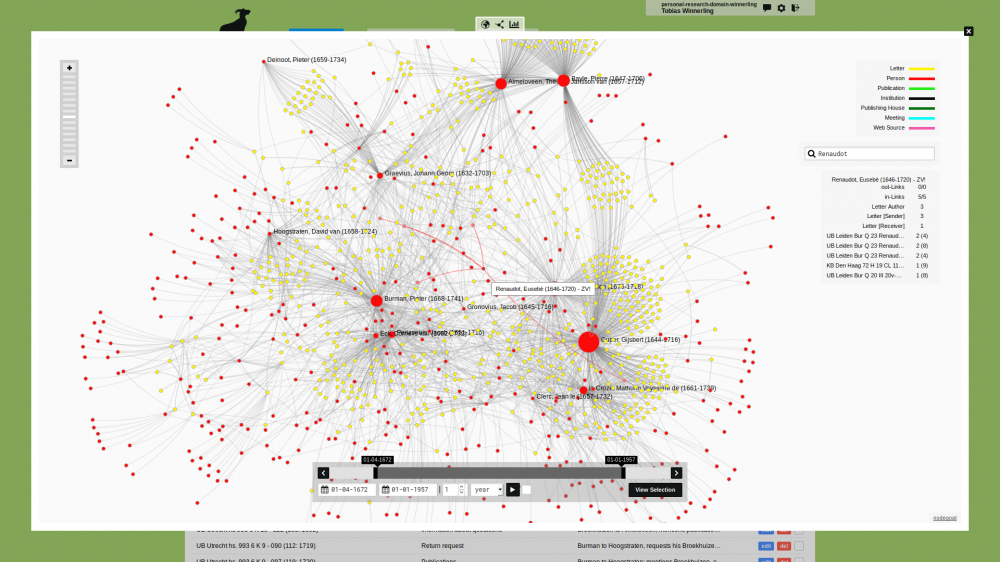Getting forgotten within the world of learning, 18th - 20th centuries
CORE Admin
Tobias Winnerling (Heinrich-Heine-Universität Düsseldorf) I needed a tool for diachronic visualization of network data as I wanted to focus on networks which break down, peter out, and dwindle away over time. My project aims at reconstructing the processes at work when scholars drop out of the memory of the world of learning. I had two assumptions to start with: Scholars are forgotten when they are no longer referenced, cited, talked and written about; and almost all scholars get forgotten over time.
While struggling to find a method to investigate these processes and a tool to carry it out, I came across nodegoat and was intrigued by its flexibility and capacities of diachronic visualization from the start. So I decided to design my project as an inverted reception analysis in the form of a network study – after all, any reference to a scholar constiutes a relation between a referrer and the one who is referred to. Publications, letters, quotations, citations, references and meetings all were to figure as parts of this network originating from a few exemplary persons, and the huge freedom of configuration nodegoat allows has helped me a lot in curating these data and understanding the relations between them. As I do not have figured out the full range of possibilities yet, I am still working on my data model.
Project website: fading18-20.hypotheses.org
